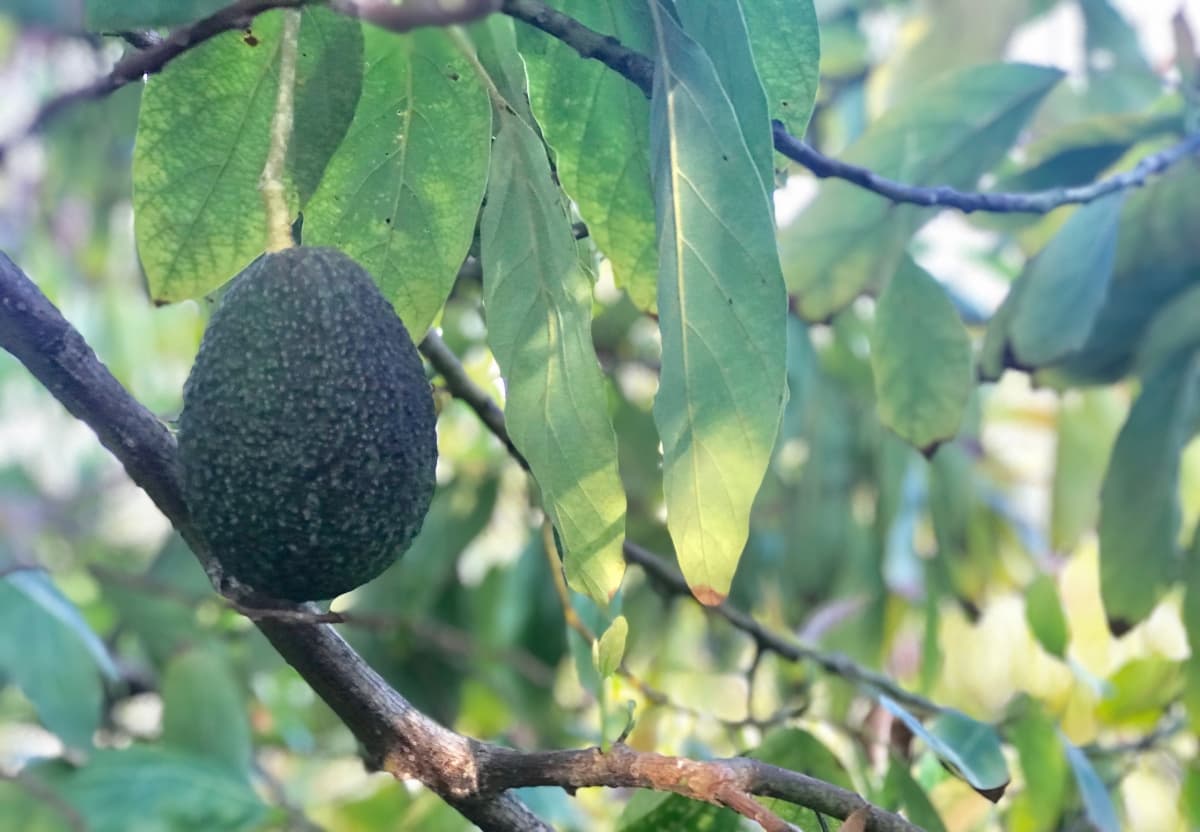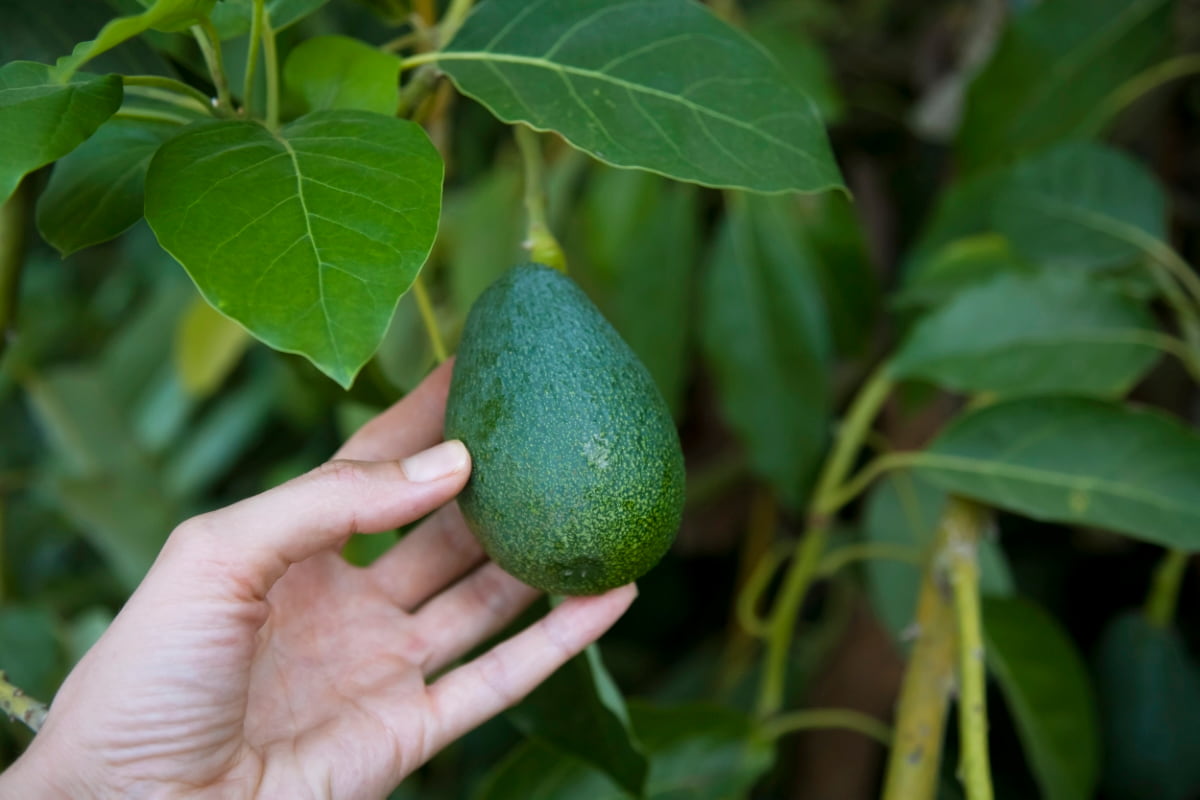In the vibrant agricultural field of California, avocados stand out as a particularly lush and lucrative thread. Where do avocados grow best in California? It’s a question with a layered answer. California’s multifaceted terrain and climate are tailor-made for avocado cultivation, be it the sun-kissed expanses of Southern California or the temperate embrace of the North. The avocado season in California extends across a significant timeframe, facilitated by the varied microclimates.

While the question of avocado temperature requirements may be a preoccupation for some, others might be intrigued by how long it takes to grow an avocado tree from a pit. From the Southern to the Northern regions and every patch in between, the story of the California avocado unfurls.
Understanding the Climate and Soil Requirements for Growing Avocados in California
The puzzle of avocado cultivation is pieced together with factors like climate and soil. Avocados, in their essence, are lovers of moderation. Their ideal temperature straddles between 60°F and 85°F, though a brief dalliance with 28°F can be tolerated. Soil, the very bedrock of cultivation, needs to be well-draining.
Avocado trees, for all their hardiness, detest waterlogged roots, making them susceptible to root rot. The geographical sweep of California, with its valleys, coasts, and mountains, lends itself to a gamut of microclimates, some more suited to these requirements than others.
Selecting the Right Avocado Varieties for Successful Growth in California
The vastness of California not only supports varied climates but also a bouquet of avocado varieties. While the lion’s share of the market might belong to the Hass variety, especially when discussing Southern California avocados, there’s a rich undercurrent of other types. Varieties such as Fuerte, Bacon, and Zutano, each with their unique flavor profile and seasonality, find a home in different corners of the state, further enriching the narrative of the California avocado.
Preparing the Soil and Planting Avocado Trees in California
A venture into avocado cultivation begins at ground zero – the soil. A check on the soil’s pH level sets the stage. Avocados have an affinity for slightly acidic to neutral soils, marking the pH range between 6.0 to 7.5 as ideal. If the soil composition seems lacking, introducing organic matter can amend its texture and drainage quality. Planting is the next chapter. Given the robust growth potential of avocado trees, it’s crucial to space them adequately, considering the shade they’ll cast at maturity.
Proper Irrigation Techniques for California Avocado Orchards
Water is the essence of life and needs judicious application in avocado orchards. The watering philosophy for avocados leans towards deep and infrequent patterns, fostering strong root growth. The intense heat and dryness periods in California accentuate the importance of regular, ample irrigation. Instruments like drip irrigation and soaker hoses rise to prominence here, ensuring consistent moisture levels while championing the cause of water conservation in a state where drought is a recurrent concern.
In case you missed it: How to Start Winter Vegetable Garden in Northern California

Nutritional Requirements and Fertilization of Avocado Trees in California
Just like any living being, avocados thrive on a balanced diet. Periodic soil tests serve as report cards, indicating any nutritional deficiencies. As a rule of thumb, avocados have a penchant for nitrogen-rich fertilizers. But this comes with caution – over-fertilization, particularly with nitrogen, can play spoilsport with fruit production.
Pruning and Training Avocado Trees for Optimal Growth and Fruit Production
The art of pruning is to avocado trees what grooming is to pets. A well-pruned tree looks good and breathes better, thanks to improved air circulation and sunlight infiltration. And then there’s the aspect of training young trees, a practice that pays dividends in the future. A well-trained young avocado tree lays down a strong structural foundation, setting the stage for bountiful harvests in the years to come.
Managing Pests and Diseases in California Avocado Orchards
The journey of avocado cultivation is full of challenges. Pests, like the Persea mite and diseases, with root rot being a prominent adversary, lurk around, looking for opportunities to strike. However, a blend of vigilant monitoring, leveraging natural predators, and the strategic use of organic treatments keep these threats at bay, ensuring the health and productivity of the orchards.
Harvesting and Post-harvest Handling of California Avocados
The crescendo of the avocado cultivation saga is the harvest. Since avocados are unique in their refusal to ripen on the tree, determining the right harvest time becomes a play of size and texture. Once off the tree, handling these fruits requires a gentle touch and an understanding of post-harvest storage and ripening protocols to ensure that they reach consumers in prime condition.
In case you missed it: South California Vegetable Gardening/Planting Calendar: Know What to Grow in Different Seasons and Months

Growing Avocados in Southern California
If one region were to be emblematic of avocado cultivation in California, it would be the South. Southern California is a Mediterranean dream; avocados, especially the Hass variety, revel in this setting. The diurnal temperature variation, characterized by warm days and cooler nights, is a catalyst for producing fruits rich in flavor and texture.
Growing Avocados in Northern California
Venturing northwards, the avocado story takes on a different hue. Northern California, with its somewhat cooler demeanor and varied precipitation patterns, poses unique challenges and opportunities. But with the right varieties and an understanding of the local microclimate, the North can produce avocados that often surprise with their distinct taste profiles.
Growing Avocados in Central California
Central California serves as a bridge, amalgamating elements from both the North and the South. Its diverse topography and microclimates mean that avocados can find a comfortable niche with the right care regimen. The primary challenge, however, lies in the region’s sporadic dry spells, making irrigation practices paramount.
Growing Avocados in Eastern California
Given its distance from the coast, the eastern part of California embodies a more intense climate – hotter and drier. For avocados to thrive here, growers must be on their toes, especially regarding irrigation. The choice of avocado variety also becomes crucial, with a preference for those that can withstand the rigors of the Eastern climate.
Growing Avocados in Western California
On the flip side, Western California is a coastal symphony. The maritime influence blankets the region in a mild, consistent climate. This balance, where extremes are rare, is a haven for avocado cultivation. The trees here, aided by the ambient conditions, often produce fruits that excel in health and quality, making Western California a vital chapter in the state’s avocado narrative.
Optimizing Avocado Growth with Technological Advances
Technology plays an indispensable role in today’s world, even in traditional fields like agriculture. For avocado growers in California, embracing modern technological tools can make a significant difference. Advanced soil sensors, for instance, can provide real-time feedback about moisture levels and nutrient content, helping growers make informed irrigation and fertilization decisions.
In case you missed it: Best Tomato Varieties for California: When to Plant for Southern, Northern, Central, Eastern, and Western Regions

Similarly, drones equipped with infrared cameras can aid in monitoring tree health and spotting potential pest or disease outbreaks before they become widespread. By integrating these technologies, California’s avocado growers can ensure more efficient, sustainable, and productive orchards.
Conclusion
The California avocado, in all its creamy goodness, is more than just a fruit; it’s a testament to the state’s agricultural prowess, resilience, and adaptability. From understanding the intricate nuances of soil and climate to harnessing technological advances, the journey of the avocado in California is a narrative of passion, innovation, and dedication.
- Feed Your Flock for Less: Top 10 Tips to Save on Chicken Feed
- Ultimate Guide to Ossabaw Island Hog: Breeding, Raising, Diet, and Care
- Hatching Answers: The Top 10 Reasons Your Chickens Aren’t Laying Eggs
- Eggs and Economics: Breaking Down the Cost of Raising Backyard Chickens
- Defend Your Greens: Proven Methods to Keep Iguanas Out of Your Garden
- Ultimate Guide to Cinnamon Queen Chicken: A Comprehensive Guide for Beginners
- Ultimate Guide to California Tan Chicken: Breeding, Raising, Diet, Egg-Production and Care
- Ultimate Guide to Marsh Daisy Chicken: Breeding, Raising, Diet, and Care
- 10 Types of Chicken Farming Businesses You Can Start for Profits